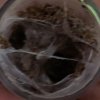- Messages
- 193
- Location
- :)
I'm trying to figger out the difference (if there is one) between a fossorial and a terrestrial. I've been reading some web sites but can't come up with much. Some folks say the terms are interchangeable. I have an LP that will dig a little in her hide, but nothing major. I consider her a terrestrial since she is out in the open a lot. Then I read about Ts that need about 8-10 inches of substrate bcuz they dig really really deep. When I read that I can picture those ant farms I had as a kid. So, what's the story? Are they the same or IS there a difference? GO DODGERS!


